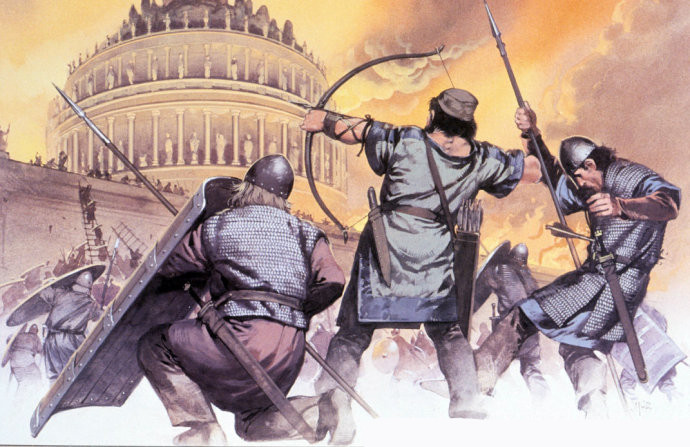The core of this culture was lost with the fall of Constantinople.
文化的核心隨著君士坦丁堡的覆滅失去了。
But Byzantine culture lived on in the West, as Greek scholars grabbed their precious manuscripts and fled to Italy,
但是拜占庭文化卻一直在歐洲流傳,因為希臘學者帶著他們珍貴的手稿逃往意大利,
where wealthy merchants and nobles sponsored them spawning the rebirth of Greek Learning in the West.
在那里富足的商人和貴族資助他們,使希臘的學術文化在西方重生。
The Renaissance which resulted would in turn lead to the enlightenment making Byzantium a bridge,
文藝復興帶來了啟蒙運動,這讓拜占庭成為了一座橋梁,
through which Greek and Roman democratic institutions were transmitted to the modern world.
使希臘和羅馬的民主機構過渡到了現代世界。
The Byzantine culture would take on new life far to the North where the Grand Douche of Muscovy had just emerged from 2 centuries of Mongol rule.
拜占庭文化在遙遠的北方重獲生機,那里大俄國剛剛從蒙古長達兩個世紀之久的統治中擺脫出來。

And Tsar Ivan III 1462 to 1505 would take as his 2nd wife and his valued advisor the Byzantine princess Sophia Palaiologina.
沙皇伊凡三世(1462-1505年在位)迎娶了第二任夫人,同時也是他重要的顧問——拜占庭公主索菲婭·帕列奧羅格
As we will find out in Unit 4, Muscovy and its successor state Russia would explicitly consider itself the III and supposedly permanent incarnation of Rome.
我們會在第四單元俄國和他的后繼俄羅斯中詳細介紹,它把自己視作第三個,或許是永遠的羅馬化身。
Segment 15D, Pope's, Kaisers and Tsars.
15D部分,教皇,皇帝和沙皇。
In its 2206 years of existence the Roman state passed from a small Latin speaking town on the Tiber River,
在羅馬2206年的歷史中,它從臺伯河畔一個講拉丁語的小鎮,
to a Greek speaking Metropolis straddling the boundary of Europe and Asia.
慢慢發展成了橫跨歐亞的講希臘語的大都市。











